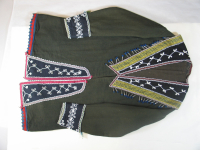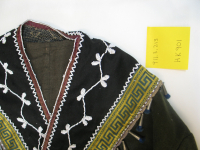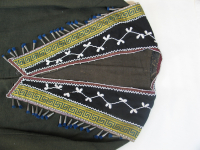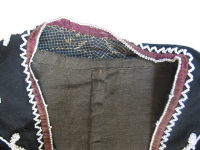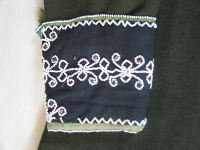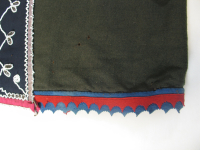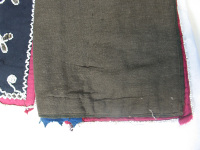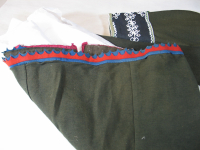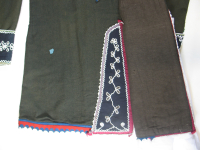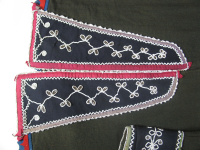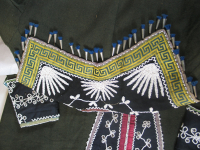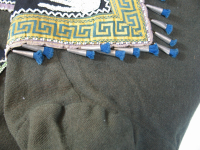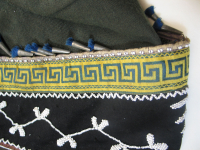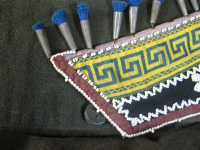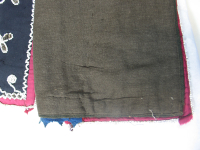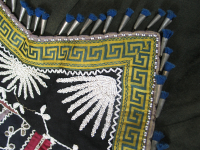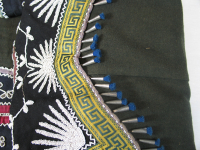coat worn by John Tecumseh Henry
coat worn by John Tecumseh Henry
coat worn by John Tecumseh Henry
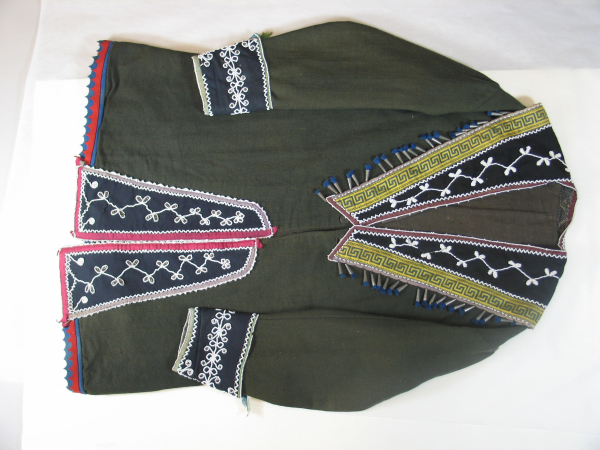
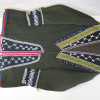
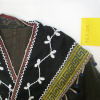


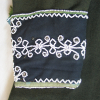
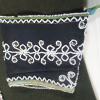

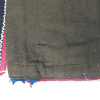
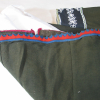
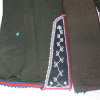
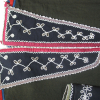
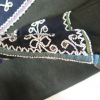
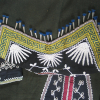
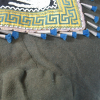

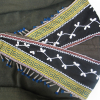
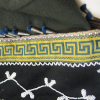
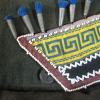
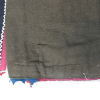
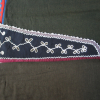
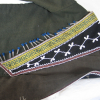
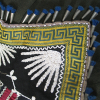
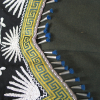
Cloth coat with beadwork and appliqued ribbon stated to have been worn by Chief John Tecumseh Henry, son of Maungwudas of Carodoc (Munsee), to greet the Prince of Wales in 1860. Beadwork is applied in stylized fronds, flowers and leaves, zig-zag lines, sunbursts, and variants of the double-curve motif. Collar is bordered with commercial tape resembling zig-zag lines, and tinkle cone fringe. Dr. Oronhyatekha Ethnology collection.
awanwa-pe (mist man), John Techumseh Henry, was Anishinaabe from Munsee
GRASAC generated
Read More About This Relative
High quality black broadcloth used for the collar. The cuffs and the centre front panels are inexpensive dark blue twill cloth. The body of the coat has probably faded from black to green and is an inexpensive wool twill with a cotton warp. Collar is lined with indigo calico. Blue and red felt trim at bottom cut into scalloped contours with pinked edges. Lining of coat is a dark brown coarse linen fabric. Size 10 and 8 white seed beads,gun metal coloured tubular beads, metal cones with blue woolen tape inserted. wide green and yellow silk tape woven in pattern of Greek meander with zig- zag border lines (this was identified as silk through microscopic examination of a sample by ROM conservator Shirley Ellis). Burgundy, red, faded blue, green, turquoise (faded) silk ribbon,
Front panels cut in one piece, seamed along the upper half to armhole, bottom part wraps around to the back which is made of two narrow panels . Sleeves cut in two pieces, shawl-like collar, cuffs, and decorative front panels are appliqued on to body of the coat
The patterns on the commercial tape ('Greek key' and zig-zag) closely resemble the traditional woven and quilled castellated and zig-zag lines associated with the Underwater Being. Beadwork in stylized fronds and leaves, variants of the double-curve motif, and zig-zag lines. Back of collar has three large sun or sunburst motifs.
There is another coat belonging to John Tecumseh Hnery in the American Museum of Natural History. Neither this nor the AMNH coat is the one he is wearing in the photograph taken in Europe when he performed there in the 1840s. John Tecumseh Henry is the son of Maungwadas.
Munsee is the home of Carodoc (Anishinaabe), Lenape, and Oneida. The style of the beadwork seems to reflect Onkwehonwe influece.
Additional measurements: sleeve length - 67, chest - 60
Provenance
F. Barlow Cumberland, Catalogue and Notes of the Oronhyatekha Historical Collection, (Toronto: Independent Order of Foresters, 1904), p 24,
Item 77. "Black Beaded Coat worn by Chief John Tecumseh Henry. This beaded coat and the leggings, No. 78, were worn by the Chief when he was presented to the Prince of Wales in 1860."
About This GRASAC Record
Unknown artist, coat worn by John Tecumseh Henry. Currently in the Royal Ontario Museum, 911.3.213. Item photographed and described as part of a GRASAC research trip December 2008; GRASAC item id 1578.
GRASAC team research trip to the Royal Ontario Museum, December 15-19, 2009. Heidi Bohaker, Alan Corbiere, Lewis Debassige, Anne De Stecher, Judy Harris (Dec 16-17) Darlene Johnston, Stacey Loyer, Trudy Nicks, Ruth Phillips, Tracey Forster.
Monday Dec 15, Ethnology collection team: Alan Corbiere, Lewis Debassige, Trudy Nicks, Cory Willmott, Ruth Phillips, and Anne de Stecher with the assistance of Tracy Forster.
Shirley Ellis, textile conservator, looked at the coat to identify the green and yellow tape on collar













 Knowledge Sharing Platform
Knowledge Sharing Platform

